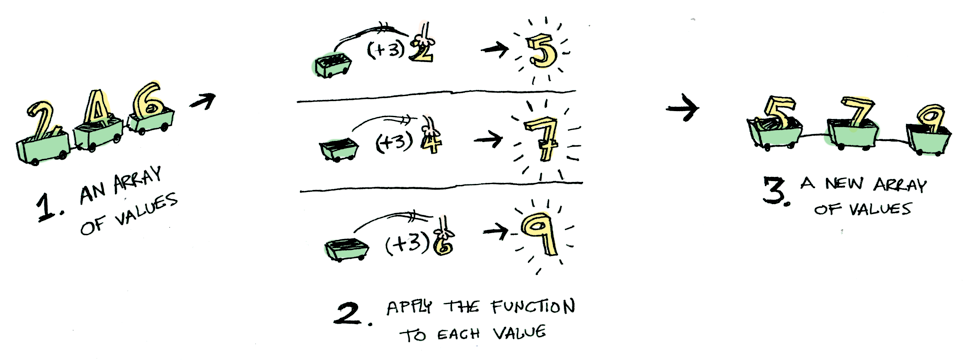Fmap In Haskell. Haskell coding-style: map, fmap or <$>? Note that for any type constructor with more than one parameter (e.g., Either ), only the last type parameter can be modified with fmap (e.g., b in `Either a b`). Methods fmap :: (a -> b) -> f a -> f b Source # fmap is used to apply a function of type (a -> b) to a value of type f a , where f is a functor, to produce a value of type f b. The usage of the type variable f can look a little strange at first. Prime fmap is used to apply a function of type (a -> b) to a value of type f a, where f is a functor, to produce a value of type f b. Looking at its definition, reveals that it's recursive implementation is exactly what one would expect: map :: (a -> b) -> [a] -> [b] map _ [] = [] map f (x:xs) = f x : map f xs Description An abstract datatype f a, which has the ability for its value (s) to be mapped over, can become an instance of the Functor typeclass.

Fmap In Haskell. What is less well known is that the second actually follows from the first and parametricity, so you only need to sit down and prove one Functor law when you go. The Sequence version of toList is in the Foldable class. The class is defined as follows: class Functor f where fmap :: (a -> b) -> f a -> f b. Note that for any type constructor with more than one parameter (e.g., Either ), only the last type parameter can be modified with fmap (e.g., b in `Either a b`). Haskell represents the concept of a functor with the Functor typeclass. Functor only has the single method, so we've already covered that. Fmap In Haskell.
The map function applies an operation to the objects inside a container (polymorphic types can be thought of as containers for values.
The Either type, and associated operations.
Fmap In Haskell. Synopsis Documentation class Functor f where Source # The Functor class is used for types that can be mapped over. The first one, map, is the typical function we are all used to in functional programming. Prime fmap is used to apply a function of type (a -> b) to a value of type f a, where f is a functor, to produce a value of type f b. It says: give me a function that takes an a and returns a b and a box with an a (or several of them) inside it and I'll give you a box with a b (or several of them) inside it. Haskell coding-style: map, fmap or <$>? This typeclass has a single required function fmap. class Functor f where fmap :: (a -> b) -> f a -> f b.
Fmap In Haskell.










